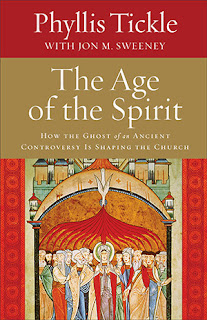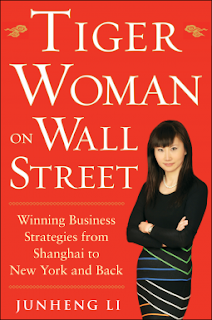TITLE:
Sabbath as Resistance: Saying No to the Culture of Now
AUTHOR: Walter Brueggemann
PUBLISHER: Lousville, KY:
Westminster John Knox Press, 2014, (124 pages).

You have probably heard about impatient societies or situations in which people simply cannot wait. With many symbols all around us that promote speed and efficiency, our fast-paced culture supported by fast-food industry is helping all of us race one another constantly in the search for meaning and accomplishments. Even Christians are not immune to this state of busyness and rush. Thankfully, there are perceptive people such as Walter Brueggemann who offers their acute awareness of contemporary culture that is combined with their grasp of biblical truth. Old Testament Professor and renowned author of books like "The Prophetic Imagination," and "Truth Speaks to Power," contributes yet another counter-cultural take on resisting the ways of the world. Expanding upon the topic first published as a series of Bible studies at "
The Thoughtful Christian" website, Brueggemann has expanded the teaching into a book that aims to resist the worldliness by saying "NO to the culture of now." Riding on a provocative title, this book is deeply necessary to bringing back sanity back in an increasingly restless world. Brueggemann joins a chorus of prophetic voices in speaking against the restlessness, the frantic busyness, and the aimlessness of the world. He shares with theologian Marva Dawn and Michael Fishbane on the Jewish wisdom practices about keeping the Sabbath. He acknowledges the classic book on Sabbath by Abraham Heschel, calling it a "magisterial book." He then mines the Old Testament passages, focusing particularly on the Ten Commandments, to draw out elements of what it means to practise the Sabbath as resistance and provides an alternative lifestyle to a world that is quickly becoming breathless due to over-exertion, over-activity, and overwhelming anxiety.
Firstly, it means recognizing the Fourth Commandment as the "crucial bridge" that connects the rest of the commandments. The first commandment concerns God, and out of this flows the rest of the motivation to honour and please God. It is God who had freed Israel from slavery. It is God who had provided the people with freedom and liberty. Even as Exodus describes the toilsome labours and pains that the Israelites had to endure, there is that sense of God mindful of the very things that hem the people down: Forced labour. Brueggemann says it well: "
At the taproot of this divine commitment to relationship (covenant) rather than commodity (bricks) is the capacity and willingness of this God to rest." On an on, Brueggemann reminds us how we have tried to commodotize life as a whole, enslaving ourselves into a regimen of production, and non-stop achieving. Such efforts are effectively slavery of the modern kind.
Secondly, based on Exodus 20:12-17, Brueggemann expands his reflection on how work has caused much anxiety. The culture around us often promotes the worship of human deeds and goods, and as far as the Christian is concerned, leads dangerously to the elevation of idolatry. Keeping the Sabbath reacts against this trend by being a testimony against the insecurities of doing and achieving, toward the reality of being and resting.
Thirdly, knowing the nature of human beings, we are reminded that Sabbath as Resistance also mean some form of "coercion" to respect the rhythms and patterns of creation. Only then, one can be able to rest and be free from anxiety. Once we discipline ourselves to respect the seasons, and to rest during rest periods, and work during work periods, we will be truly free. Fighting against a culture of "acquisitiveness" has two main motivations: Honouring the covenant with God, and cultivating the community we live among.
Fourthly, Brueggemann traces the passage from a mixed culture to an exclusive culture. At the time of the Exodus, Israel has no identifiable culture (Exodus 12:38). At Sinai, the giving of the commandments sparked off a new beginning, the Mosaic covenant as identity. Leviticus reminds Israel about cultic purity and cleansing rituals, to drive home the holiness of God. Looking at Isaiah 56:3-8, we learn of how keeping the Sabbath broadens the identity through neighbourliness, that anyone willing to keep Sabbath will be a part of this exclusive community.
Fifth, Brueggemann probes Amos 8:4-8 to look at what Scriptures had to say about multitasking. As a social critic himself, the prophet Amos attacks the consumerism of the age and the endless self-indulgent culture. This comes across through multitasking of all things in order to consume and gratify oneself more. Instead of rest, one becomes more restless. Instead of honouring God, one grows deeper into idolatry.
Sixth, Brueggemann ends with a description of the Tenth Commandment, saying that it is unlike the rest of the commandments. This last commandment is a warning against covetousness. It involves a "posture" as well as "practice." It is the anti-thesis of neighbourliness. Without the protection of Sabbath keeping, one will covet other things, and the possessions of others.
So What?
Reading this book reminds me once again how relevant Sabbath keeping is for our world. On and on, we hear of an always-on, 24x7, and constant availability of anything to keep us running, working, and coveting. In Sabbath keeping, we have this ancient practice to discipline ourselves, to help us acknowledge that we are not super-people. We are not robots who can work non-stop. We need to rest regularly. We need to take a break frequently. We need to keep the Sabbath religiously, simply because we do not create ourselves. God has created us and it is best to follow the "manufacturer's manual."
Brueggemann has written a concise book about keeping Sabbath, and this is clearly written for laypeople. More could have been written about how technology and the digital addiction can be addressed. Our current era has a problem of a new kind of idolatry. The Internet, the smartphone, the digital waves around us, all threaten to overwhelm us more and more. How do we resist such temptations? What are the ways in which we can practise Sabbath keeping in an Internet era? Is there anything the Christian community can practise together to resist these wireless intrusions? Maybe, Brueggemann is already aware of the many resources and literature out there that have spoken on such topics. That said, at least, he could have pointed readers to resources that he know about. If I have any critique, I would say that this book is way too brief for a topic that can be expanded upon more.
I highly recommend this book for two reasons. First, it is staunchly biblical and sees Sabbath keeping with a big picture perspective. Instead of letting just a few verses lock the author in, the author is able to allow biblical theology to guide the reading and understanding of the Sabbath. Second, we all need it. We are in a modern quicksand of anxiety, restlessness, and impatience. By keeping a regular Sabbath, we will learn to be more sane, and more importantly, to guide our next generation to do the same. The modern ideology of busyness and non-stop work only leads us toward idolatry of activities, achievements, and acquisitions. Sabbath keeping helps us resist that.
Rating: 5 stars of 5.
conrade
This book is provided to me courtesy of Westminster John Knox Press and NetGalley in exchange for an honest review. All opinions offered above are mine unless otherwise stated or implied.
 This is the third book in the series of new shifts in the Christian Church arena. The first book, The Great Emergence looks at Christianity with the thesis that every 500 years, the Church at large will go through a great change or significant transition from one form to another. A religious trends enthusiast as well as Professor of religion, Phyllis Tickle reviews Christianity's shape and its impact on culture every 500 years. The second book, Emergence Christianity, continues where the first book left off, focusing on the concerns, organizational changes, and forms of the church for the next 500 years. My conclusion for that book was Tickle's prediction tends to be more "bird's eye rather than bull's eye," and how her book is high on demonstrating how the changes are happening and low on what exactly is the Church going to look like. This third book shifts gear a little bit. Instead of focusing on how the church is going to look like in the future, Tickle prefers to go back to the Holy Spirit, believing that once we understand the Age of the Spirit, we will get a better handle on how change is going to be happening for the foreseeable future. Simply put, Tickle believes that there is a sense that history is going to repeat itself. The question is, which part of history and when will that happen? It is the Holy Spirit that spurs all these great emergence or transformations.
This is the third book in the series of new shifts in the Christian Church arena. The first book, The Great Emergence looks at Christianity with the thesis that every 500 years, the Church at large will go through a great change or significant transition from one form to another. A religious trends enthusiast as well as Professor of religion, Phyllis Tickle reviews Christianity's shape and its impact on culture every 500 years. The second book, Emergence Christianity, continues where the first book left off, focusing on the concerns, organizational changes, and forms of the church for the next 500 years. My conclusion for that book was Tickle's prediction tends to be more "bird's eye rather than bull's eye," and how her book is high on demonstrating how the changes are happening and low on what exactly is the Church going to look like. This third book shifts gear a little bit. Instead of focusing on how the church is going to look like in the future, Tickle prefers to go back to the Holy Spirit, believing that once we understand the Age of the Spirit, we will get a better handle on how change is going to be happening for the foreseeable future. Simply put, Tickle believes that there is a sense that history is going to repeat itself. The question is, which part of history and when will that happen? It is the Holy Spirit that spurs all these great emergence or transformations.














